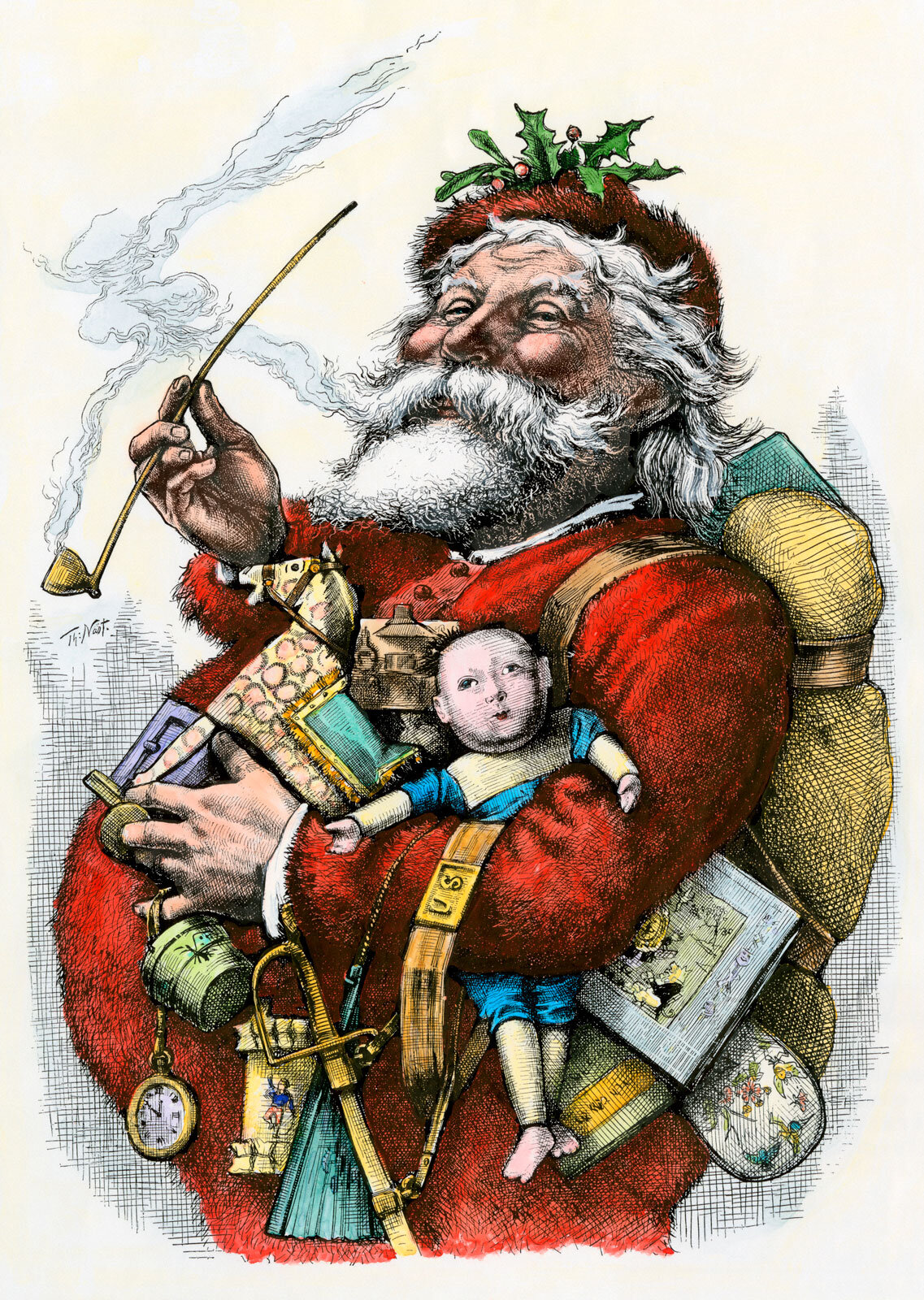THE PAGAN ORIGINS OF CHRISTMAS The Secret Symbolism of Santa
For this Yule season I’d like to tackle where the symbolism of Santa originates and the possible Pagan origins behind his appearance. The name Santa Claus has its roots in the informal Dutch name for St. Nicholas, Sinterklaas. Sinterklaas was a historic 4th-century Greek saint. However, St. Nicholas looks nothing like the jolly St. Nick we’re familiar with, so where does the symbolism of Santa come from?
The image of a jolly, chubby, grandfatherly face of Santa was largely popularized by two individuals from the 19th century: the political cartoonist Thomas Nast, and the book Twas the Night Before Christmas by Clement Clarke Moore. Book these works helped define much of the appearance & symbolism we associate with Santa today. My curiosity comes from trying to understand what religious and cultural traditions inspired Thomas Nast & Clement Moore to create our contemporary image of Santa.
There are many Pagan origins that may have inspired our modern day Santa Claus and I’d like to present just two possible ideas: Odin & Siberian Shamanism
ODIN
Odin, one of the major gods in Norse paganism, shares many physical characteristics with the image of Santa Claus. The winter solstice, or Yule, was a time when Odin led a hunting party, known as the Wild Hunt, in the sky with his eight-legged horse named Sleipnir.
The 13th century Poetic Edda said the mythical horse could leap great distances -- a trait reindeer possess. Children would leave their boots by the chimney filled with carrots and hay to feed Sleipnir and legend has it that whenever Odin flew by he would leave gifts by their boots.
After Christianity took hold, this practice of gift giving was later adopted in relation to St. Nicholas. Children would leave their shoes on the windowsill or bedroom door for the Saint to reward them with nuts, fruits and sweets. With all these similar symbolic and physical traits it’s very likely that the tales of Odin inspired many of the characteristics we associated with our stories of Santa.
SIBERIAN SHAMANISM
The classic red & white color scheme of Santa possibly derives from a much older Slavic deity known as Father Winter. This red and white color scheme was chosen because it’s colors match a historically significant hallucinogenic mushroom, known as Amanita Muscaria.
This mushroom was integral to not just early Pagan civilizations, but also to early Christianity. I recommend the book The Sacred Mushroom & The Cross if you’re interested in learning more about the influence on this mushroom in early Christian society.
These mushrooms played a large role in Siberian village life, especially during the winter solstice festivities. During mid winter, the local shaman would collect enough mushrooms for everyone in the community. They would collect them in a large sack and deliver them to each house in the village. In Siberia, the snow would be really high at midwinter, making it unlikely that the Shaman would enter through the door. Instead, the Shaman would probably have to climb through the smoke hole of the hut and this may be the origin of the concept of Santa entering through the chimney.
The villagers would put the mushrooms in a sock and then hang them by the fireplace so that they would dry out. After they were dried the family would consume the mushrooms on the winter solstice, which would induce an altered state.
This specific mushroom also happens to grow beneath pine trees, the very same trees we decorate with today for Christmas & Yule. These mushrooms are also regularly consumed by reindeer in Siberia. So many reindeer at this time of year are ‘flying high’ if you get the idea.
Still today Siberian shamans wear red and white in a pattern reminiscent of the Amanita Muscara mushroom. Perhaps this red and white color scheme associated with Siberian shamanism and the Slavic deity Father Winter inspired the classic fur trimmed outfit of Santa.
It seems that the jolly old Santa stories we grow up with in fact tie back all the way to our Pagan roots. Indeed much of modern Christmas has Pagan origins and I really enjoy peeling back the layers of history to uncover Pagan tales full of holiday cheer.
What are your thoughts on my theories about the influence of Odin and Siberian shamanism? Share your ideas in the comments.





